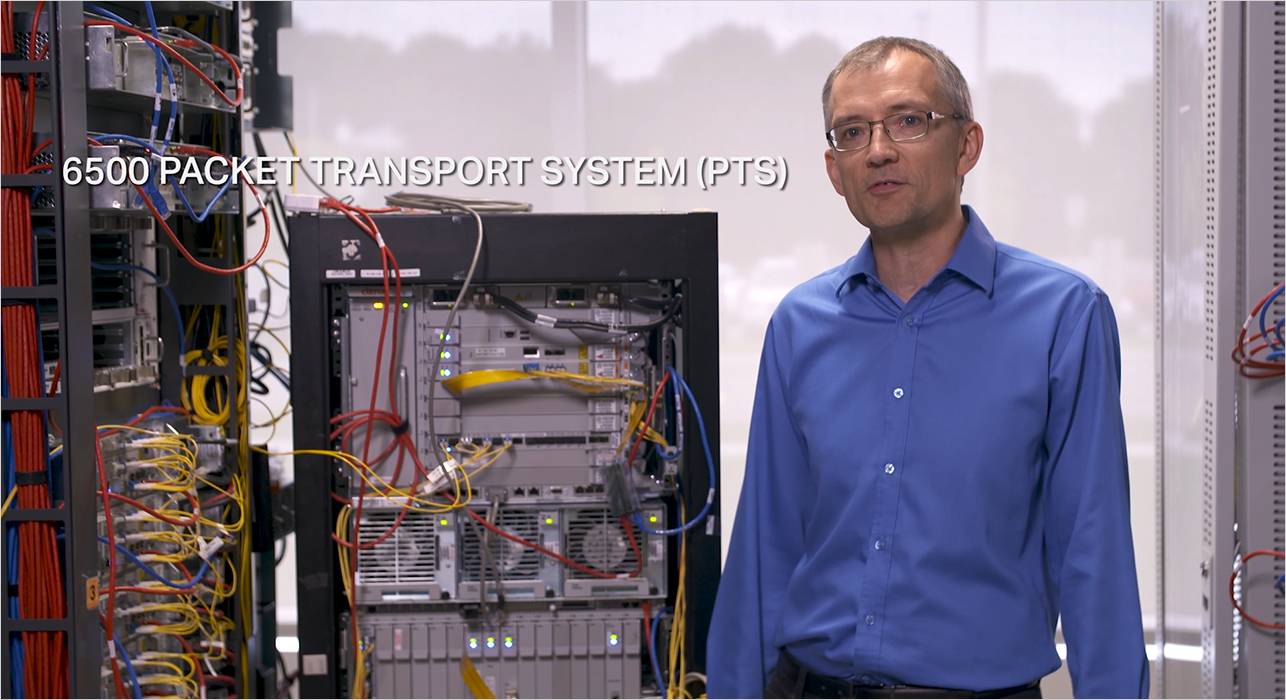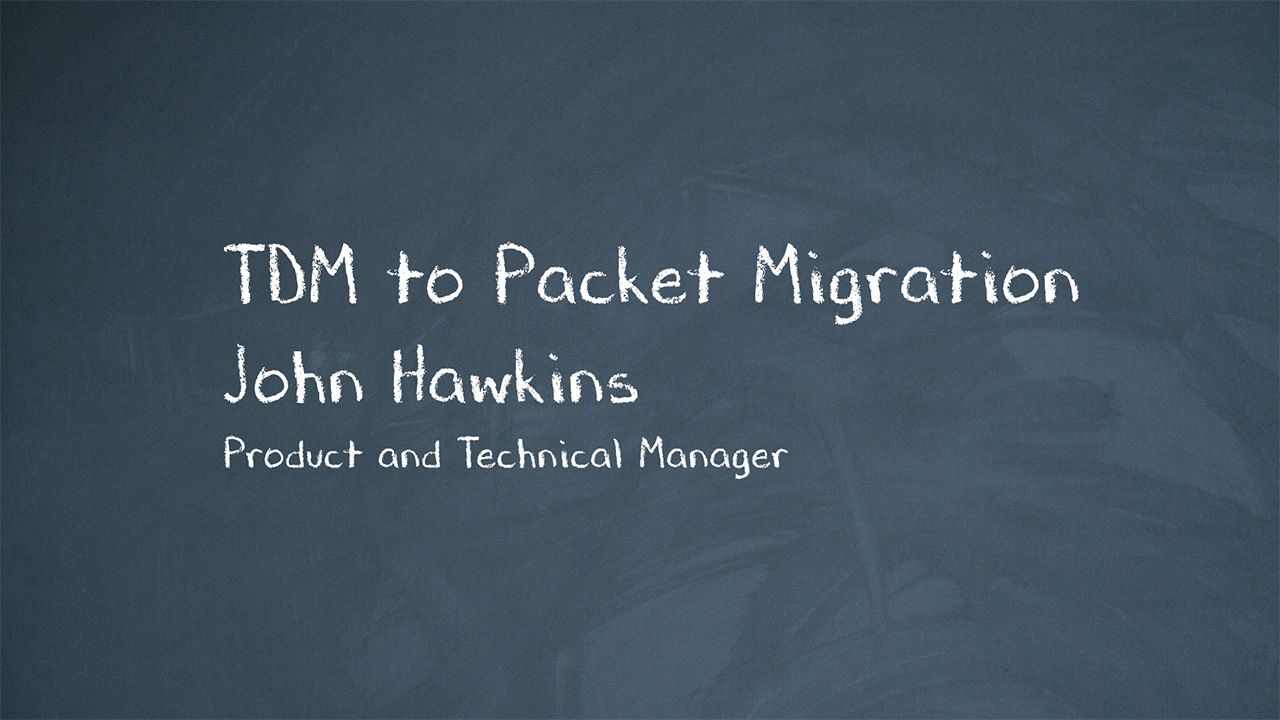How to connect your TDM and packet networks into one!
With smartphones in every pocket with applications abound, ultra-fast home or business broadband, it’s easy to forget the once cutting edge of Time Division Multiplexing (TDM) technology. The thirst for unlimited applications and increasing bandwidth are best quenched by leveraging streamlined packet technologies.
In the age of stressed revenues and associated margins, TDM is something that’s both a benefit and a burden for network operators. Higher revenues are a welcomed blessing and curse, as the decades-old TDM equipment used to provide the service, has or is nearing end-of-life. The pressure to retire legacy networks isn’t going away, so how can operators continue to cost-effectively maintain two separate networks? Well, the short answer is they shouldn’t and don’t have to, if they leverage the very latest modernization solutions available today. But before I get to network modernization, let’s take a short walk down TDM memory lane.
TDM Networks
For the last few decades, many TDM-based technologies were used to deliver switched voice, video, and data services including Digital Access and Cross-connect Systems (DACS), Add-Drop Multiplexer (ADM), and Multiservice Provisioning Platforms (MSPP). Although these technologies served their customers very well, they are definitely showing their age.

Typical TDM Network
What is a DACS?
DACS, or more commonly referred to as Integrated Services Digital Network (ISDN), is used to digitize voice, text, e-mail, and video data over copper pairs between the customer and switching office. Over the years, a major part of the network aggregated and transported private-line services (PLS) or copper-based pairs to the Local Exchange Connections (LEC) and then to the switching or data center. Each PLS is continuously connected, and where necessary, LEC, tandem offices, and Inter-exchange connections (IXC) is used to connect to the digital fiber-optic network. DACS preforms low- and high-level grooming (3/1, 3/3).
What is an ADM?
Private or leased-lined services use ADMs as the on/off ramp to the high-speed network. ADM rings of various speeds, and vendors, multiplex multiple customers into a single beam of light, carried to the local office/exchange, demultiplexed, and electrically terminated to a patch panel for connection to the high-speed network. While popular, these services don’t cost-effectively scale with the only option of going from T1/E1 to T3/E3. With only multiplexing, ADM connections did not utilize all the bandwidth transmitting empty time-slots.
What is an MSPP?
Going several steps forward, Multi-Service Provisioning Platforms (MSPPs) were developed to consolidate TDM, packet, and optical services. Common electrical interfaces were supported for private-line, data and optical – topping out at 10Gb/s OC-192/STM-64 for transport. Both High-Order (HO) and Low-Order (LO) (VT1.5) grooming were supported, enabling service grooming and consolidation. In order to support data services, many different encapsulation protocols, including Generic Framing Procedure (GFP), Packet over SONET/SDH (PoS), Frame Relay (FR), Multi-Link Frame Relay (MLFR), and Point-to-Point (PPP) were used to deliver end-to-end data services.
The TDM conundrum
The increasing cost of maintaining a separate TDM network is becoming more of a burden. Over the years vendor consolidation, often followed by manufacturing discontinuation of complete product lines, has left very few, if any, options to fill empty equipment slots or maintain old hardware; worse, legacy products require different types of control software that can be hard to update and impossible to integrate with new solutions. Letting these platforms continue to rust is not viable. It also increases risk, because network providers may not have the ability to update the legacy security software to protect the network against modern, sophisticated security attacks.
Leaving TDM equipment to rust, is not a viable option.
Addressing TDM Network Inefficiency, TDM-to-Packet, and Service Modernization
For today’s data transport needs, network providers use packet optical networks to offer IP and Ethernet services for residential enterprise customers to offer broadband, voice, cloud-computing, mobile backhaul, data center interconnects, and other network services.
While market forces and technology benefits are driving the shift to packet networking, running parallel networks to meet both TDM and Packet requirement is too costly and complicated. For operational and business efficiencies, network providers need a data transport system that can provide legacy and packet networking services on a single, future-oriented, scalable foundation. One that supports both small and large network providers transition DACS, ADM, and MSPP services to packets and deliver broadband services to the market.
To support TDM services in a packet network, you need to emulate the circuit using Circuit Emulation (CEM) and transport that CEM with Pseudowire Emulation Edge-to-Edge (PWE3). Three CEM types are used: Structure-Agnostic TDM over Packet (SAToP), CEM over Packet Switched Network (CEMoPSN), and Circuit Emulation over Packet (CEP). SAToP and CEMoPSN encapsulate payloads on low-speed services, while CEP encapsulates payload based on Virtual Connections (VCs). All of these encapsulations interoperate flawlessly with PWE3.

Network Consolidation
Network operators can evolutionize their packet network with Ciena’s TDM-to-Packet networks solutions. Just a few ports are needed at a given service end-point and smart Small Form-factor Pluggable (SFP) devices make use of PWE3 to create a virtual, dedicated lane for TDM business services. Or when more ports are needed Ciena’s 3926m Service Delivery Platform future-proofs service delivery, from TDM to virtual.
Ciena’s 6500 Packet Transport System (PTS) was purposely built to address TDM services scale and flexibility, enabling TDM-to-Packet migration and Ethernet services. With two platforms, 8-slot and 14-slot, the 6500 PTS offers network providers DACS and MSPP replacement, packet switching and transport, Headend ADM ring consolidation, TDM to Ethernet Gateway, and network modernization. The 6500 PTS stands out from the pack by offering up to 5x lower power, 10x space saving, and 4x more TDM CEM capacity than competing platforms.



While, Blue Planet’s open and extensible architecture, Blue Planet Manage, Control, and Plan (MCP), can be used to provide end-to-end lifecycle management and operations. Don’t know where to start, Ciena can help there too. Start with a network audit and topology discovery, Ciena Insights Services have in-house expertise to engineer or plan migration and modernization TDM networks.
So, get ready to connect all your network services across a single network, providing a migration to the future for legacy TDM business service, and enabling new opportunities.
Ask us how Ciena helps Evolutionize Your Packet Network.









